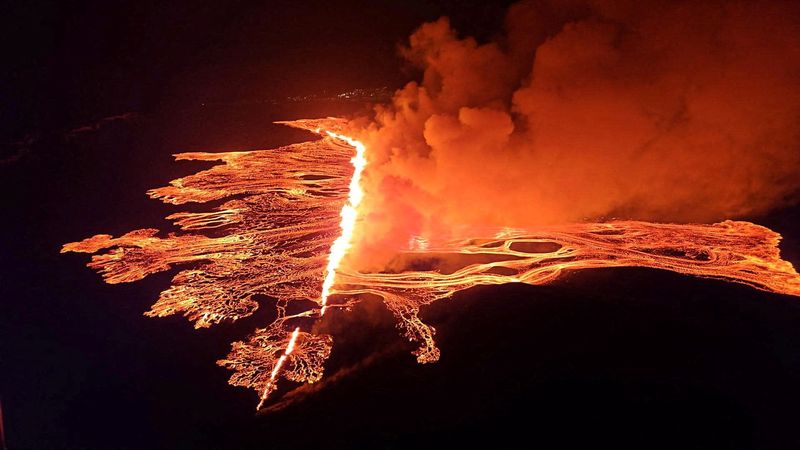COPENHAGEN (Reuters) -A volcano in Iceland that erupted on Saturday for the fourth time since December was still spewing smoke and bright orange lava into the air on Monday although infrastructure and a nearby fishing town were safe for now, authorities said.
Magma had been accumulating underground on the Reykjanes peninsula near Iceland's capital Reykjavik since the last eruption in February, prompting authorities to warn of an imminent eruption.
The warning time late on Saturday was only 15 minutes before fountains of molten rock began soaring from a 3 km-long (1.9 mile) fissure, roughly the same size and at the same place as the previous eruption.
Around 1700 GMT, the Icelandic Meteorological Office said volcanic eruption activity had been relatively stable since late on Sunday. It was now focused at two locations along the eruptive fissure, the office said in an update on the situation.
Man-made barriers have been successful in steering the lava away from infrastructure including the Svartsengi geothermal power plant and Grindavik, a fishing town of some 4,000 residents.
Footage from public broadcaster RUV showed lava flowing a few hundred metres from the town, which was evacuated during an eruption in November and again during another one in February.
"The defences at Grindavik proved their value ... they have guided the lava flow in the intended direction," local utility HS Orka said, adding that infrastructure running to the Svartsengi power plant was intact.
Lava had over the weekend flowed over one of the three roads going into Grindavik, and on Monday, it inched south towards another road into the town.
The lava looked unlikely to reach the sea, the met office said, adding that hazardous gases from the volcano were unlikely to reach Reykjavik due to strong winds.

Reykjavik's Keflavik Airport said it remained fully operational.
The eruption was the seventh on the Reykjanes peninsula since 2021, when geological systems that had lain dormant for around 800 years again became active.